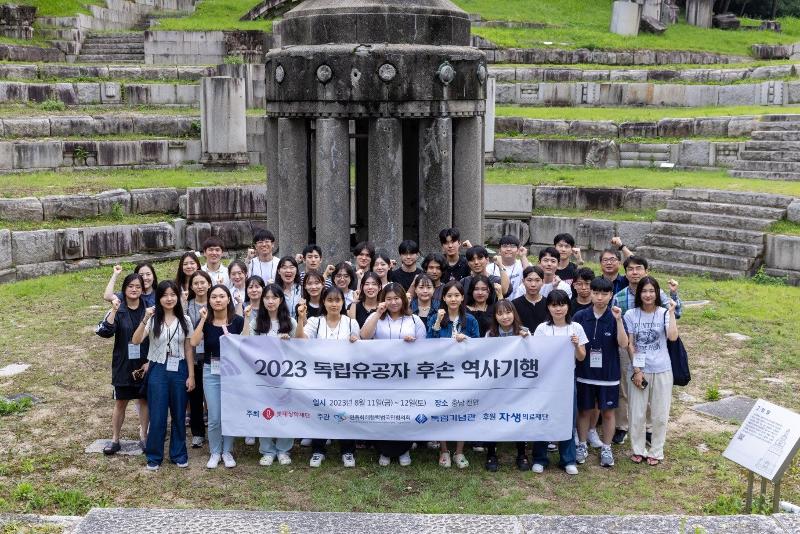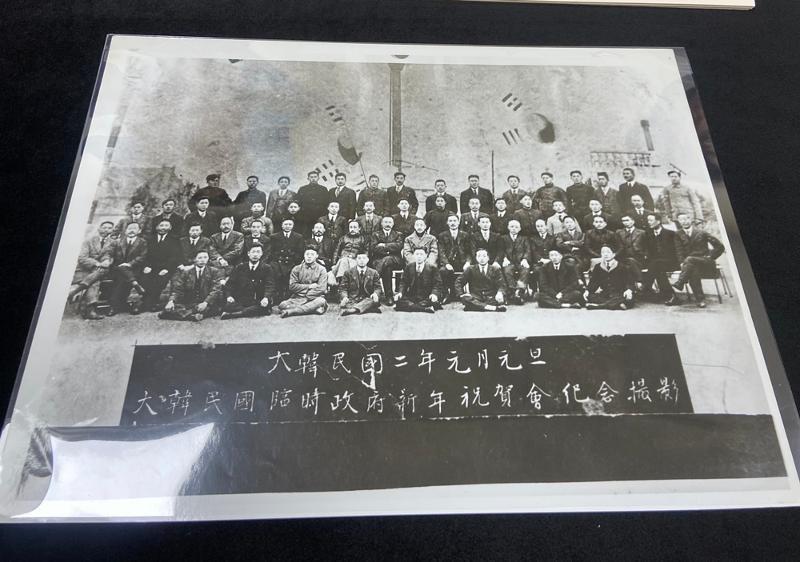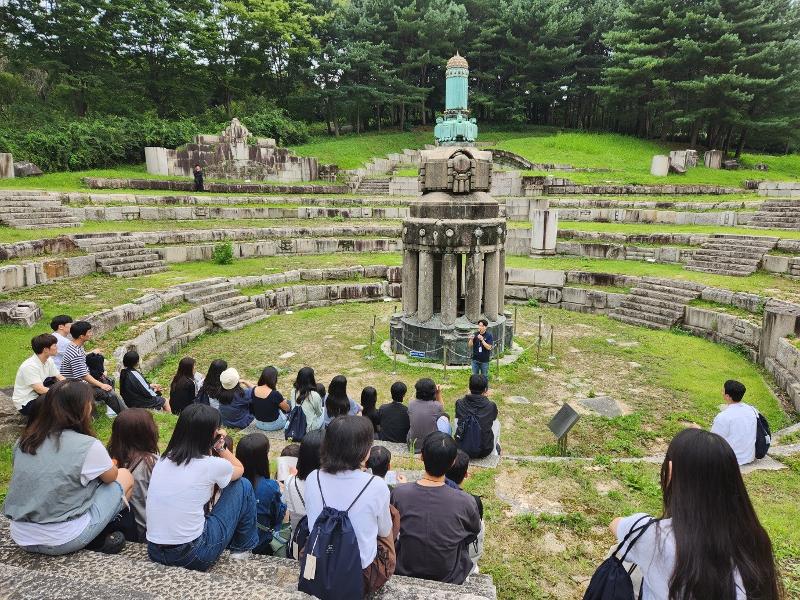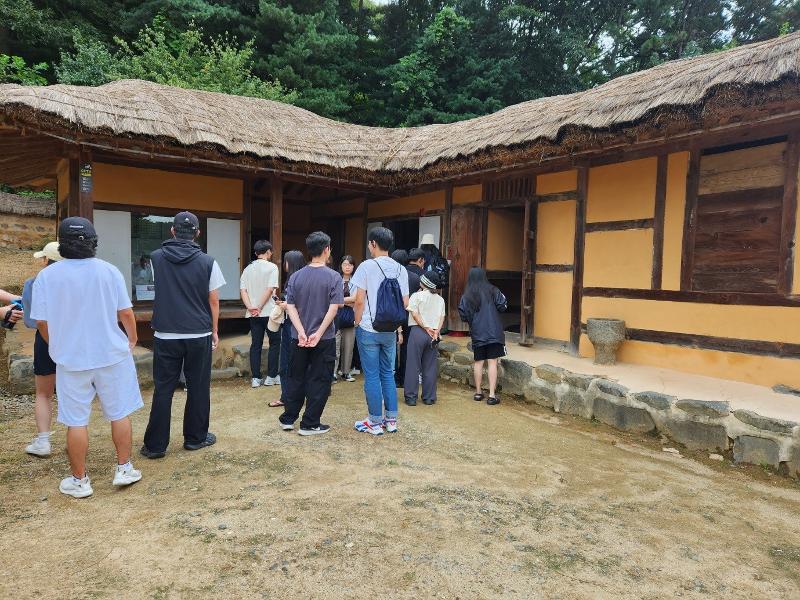
They were are all descendants of Korean independence activists participating in a two-day history tour.
The 37 attendees were all undergraduate or graduate school students in their 20s joining the program hosted by the hall and the Korean Council for Reconciliation and Cooperation to learn more about their ancestors who fought for national independence ahead of the 78th National Liberation Day.
The program began with a lecture on the history of the independence movement by the hall's president Han See Jun, followed by visits to exhibitions and the museum's storage for historical documents. The storage is not open to the public but was opened that day just for these participants.

Lee Chae-min, 21, whose ancestor Lee Jong-am in 1919 formed a pro-independence group, said after looking around the exhibition, "My sense of patriotism grew through my ancestor's actions for national independence," adding, "I want to make it widely known to many that these independence movements and efforts protected the country."

The participants went to the outdoor exhibition of the remains of the Japanese Government-General Building, which was demolished on Aug. 15, 1995, to mark the 50th anniversary of national liberation from Japan. The facility's spire and other remains are shown at this display.
The exhibition is on the western side of the hall. Curator Kim Jong-mun said, "West is the direction where the sun sets, so we displayed (the remains) in the west to symbolize the end of the Japanese colonial period," adding, "We also placed the spire 5 m below ground level to signify burial of our painful past."

The next day, participants looked around the house of patriotic martyr Yu Gwan-sun, a leading figure of the March First Independence Movement of 1919, and Yu Gwan-sun Memorial Hall. Next to her home was Maebong Church, where she attended, and it contributed to the independence movement and protests against Japanese colonial rule.

Afterwards, the participants went to Aunae Independence Movement Memorial Park, formerly Aunae Marketplace and the site of an independence movement on April 1, 1919.
The venue was especially meaningful for Han So-hee, the descendant of Kim Goo-eung. Kim
was a teacher at the nearby Jinmyeong School and led the movement there, where he was shot dead by a Japanese military officer. His mother Choi Jeong-cheol was also killed on spot by another Japanese officer when she mourned and protested the killing of her son.
Looking at the statues of her ancestors Kim and Choi, Han said, "My relatives and I come here every April 1 to hold a service and visit the cemetery of my great-great-grandfather Kim in Cheonan," adding, "It was an honor to visit this time with the descendants of other independence activists."

The final sites the participants visited were the birthplace and memorial museum of independence activist Yi Dong-nyeong. They looked around the exhibition, snapped shots at a photo zone that reenacted a scene with activists, wore apparel similar to the fashion during Japanese colonial rule and took photos.
After the tour ended, curator Kim urged the participants to reflect on the meaning of the independence movement with pride as the descendants of liberation activists.
"At the time, the independence movement endangered not only their lives but also those of their families," he said. "Nevertheless, the reason our ancestors fought for independence must've been their deep desire for their descendants to live in a free Republic of Korea without oppression."

The participants returned to the Independence Hall, laid white chrysanthemums and paid a silent tribute at the 105 People's Stairs (unofficial translation) to conclude their tour. The stairs honor the 105 members of the New People's Association who in 1911 raised funds for Ahn Myeong-geun, an association activist for national liberation.
This action led to their arrest by the Japanese colonial government, which framed and convicted them for attempting to assassinate Japanese Resident-General of Korea Terauchi Masatake. The 105 were imprisoned as a result, and the stairs are a memorial to them.
"I've always been proud of my great-great-grandfather," said Hong Jun-hee, 24, a descendant of Hong Soon-eui, who led pro-independence activity in Hwanghae-do Province. "He never evaded the calling of history and acted for his strong beliefs, something I think I should emulate."
Park Jong-hyeok, 24, whose ancestor Kim Maengdori fought in the late Joseon era with resistance forces led by fellow liberation activist Yang Han-gyu, said, "I've been to the Independence Hall of Korea many times, but find it deeply meaningful to interact with other descendants of independence activists and ponder the meaning of independence."


